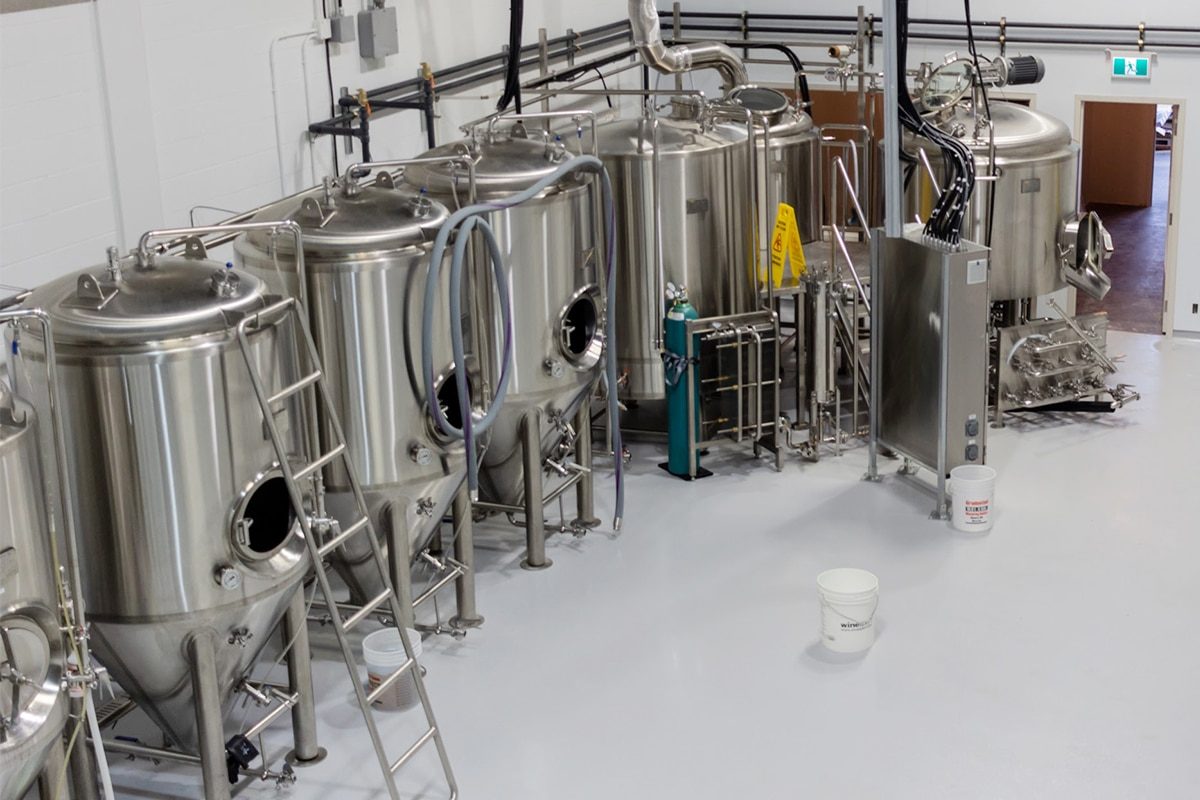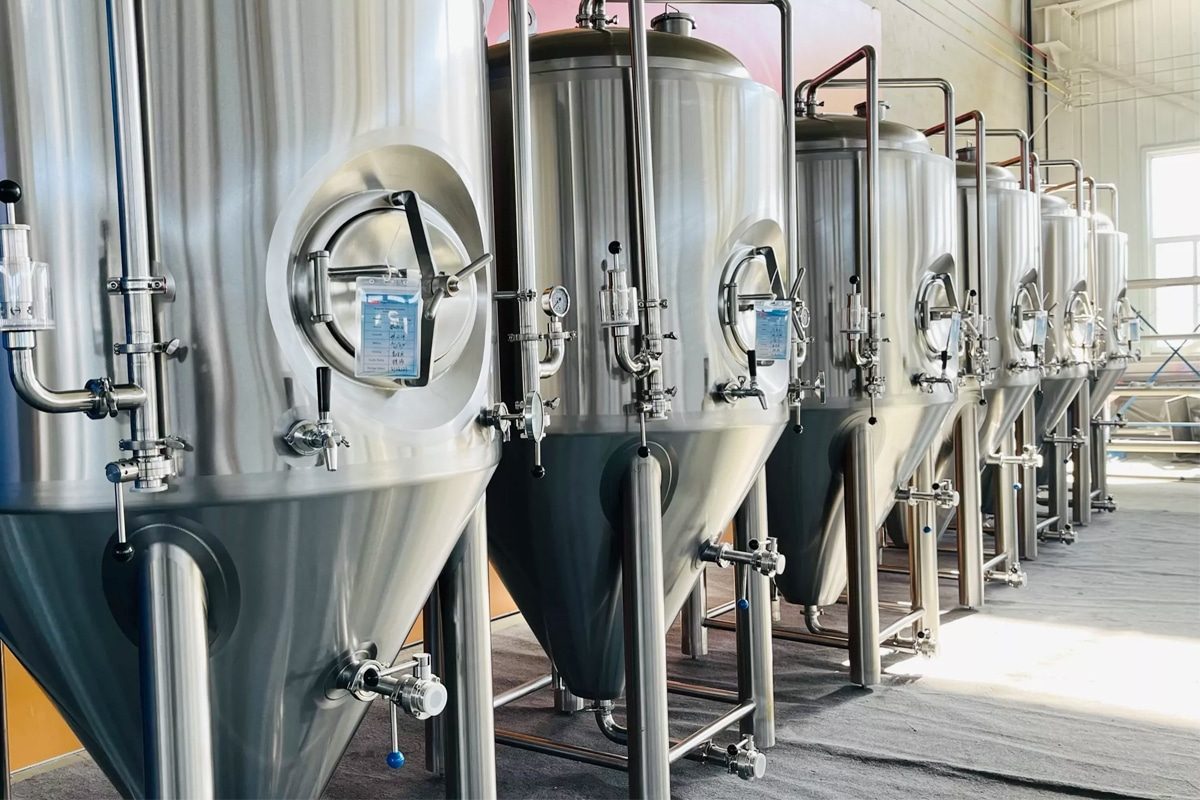
How To Maintain Consistent Temperature Control in Fermentation Tanks?
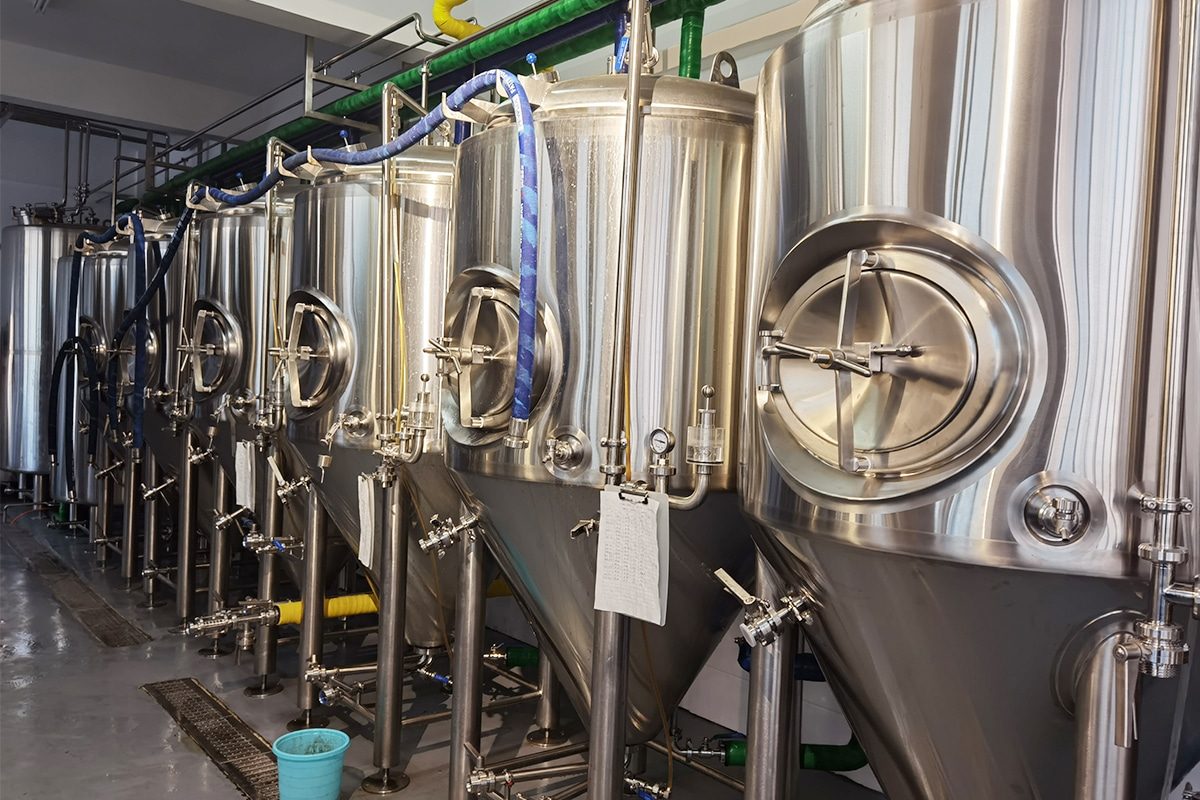
Importance of Temperature Control
Yeast Activity
Yeast is the primary microorganism responsible for fermentation, converting sugars into alcohol and other byproducts. Yeast metabolism is highly sensitive to temperature:
- Optimal Temperature Range: Each yeast strain has an optimal temperature range in which it performs best. Outside this range, yeast can become sluggish or overly active, leading to off-flavors or incomplete fermentation.
- Stress and Health: Consistent temperature helps maintain yeast health. Fluctuations can stress yeast, causing it to produce undesirable byproducts such as fusel alcohols or hydrogen sulfide, which can impart off-flavors and aromas.
Flavor Profile
Temperature control directly influences the production of flavor compounds during fermentation:
- Ester and Phenol Production: Yeast produces esters and phenols that contribute to the aromatic and flavor profile of the beer. Higher fermentation temperatures generally increase ester production, while lower temperatures can enhance phenolic compounds. Consistency in temperature ensures a balanced flavor profile.
- Byproduct Management: Uncontrolled temperatures can lead to the production of unwanted byproducts such as diacetyl or acetaldehyde, which can negatively affect the taste and aroma.
Fermentation Speed and Rate
The rate at which fermentation proceeds is temperature-dependent:
- Controlled Fermentation: Proper temperature control ensures that fermentation proceeds at a predictable rate. Too high a temperature can cause fermentation to proceed too quickly, potentially leading to incomplete sugar conversion and residual sweetness. Conversely, too low a temperature can slow fermentation, risking a stuck fermentation.
- Efficiency: Maintaining an optimal temperature range maximizes the efficiency of the fermentation process, leading to a more complete conversion of sugars to alcohol and a more predictable timeline for production.
Product Consistency
Consistency is key in commercial beverage production:
- Batch-to-Batch Uniformity: Consistent temperature control helps ensure that each batch of the product has the same flavor, aroma, and alcohol content. This consistency can improve consumer satisfaction and bring a certain brand reputation.
- Predictable Outcomes: By maintaining stable fermentation temperatures, producers can achieve more predictable outcomes, reducing variability and increasing the reliability of the production process.
Safety
Temperature control also plays a vital role in ensuring the safety of the fermentation process:
- Contamination Prevention: Consistent temperatures help prevent the growth of unwanted microorganisms that can contaminate the product. Certain pathogens thrive at specific temperatures, so maintaining an optimal range can minimize contamination risks.
- Structural Integrity: Proper temperature management ensures the structural integrity of fermentation tanks and equipment. Extreme temperatures can cause expansion or contraction, leading to potential leaks or equipment failure.
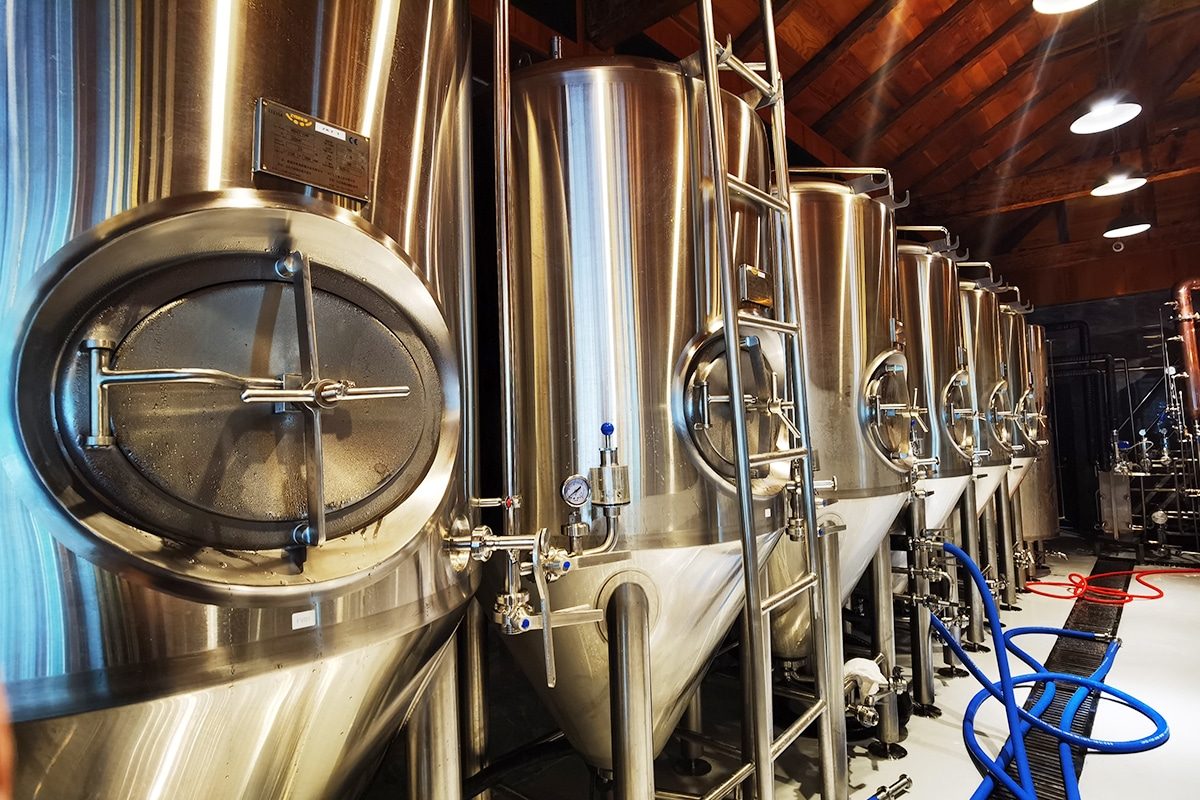
Key Factors Affecting Temperature Control in Fermentation
Ambient Temperature
The ambient temperature of the environment surrounding the fermentation tanks can significantly impact temperature control:
- Seasonal Variations: Seasonal changes can cause fluctuations in the ambient temperature, affecting the internal temperature of the fermentation tanks. For example, higher temperatures in summer can lead to overheating, while lower temperatures in winter can slow down fermentation.
- Location: The geographic location and the specific placement of fermentation tanks within a facility can influence how much the ambient temperature affects them. Tanks placed near heat sources or in direct sunlight may experience higher temperatures.
Tank Design and Insulation
Fermentation tank design and insulation can help maintain a constant temperature:
- Material and Construction: Tanks made from materials with good thermal conductivity, such as stainless steel, can facilitate better temperature control. The thickness of the tank walls and the quality of construction also play a role in how well the tank maintains temperature.
- Insulation: Proper insulation helps reduce heat exchange between the tank and the external environment. Insulating materials such as polyurethane foam or polystyrene can effectively minimize temperature fluctuations. Good insulation allows the desired temperature range to be maintained during fermentation.
- Shape and Size: The shape and size of the tank can affect temperature distribution. Larger tanks may require more sophisticated temperature control systems to ensure even temperature distribution throughout the liquid.
Heat Generated by Fermentation
Fermentation is an exothermic process, meaning it generates heat:
- Yeast Metabolism: As yeast metabolizes sugars, it releases heat. The amount of heat generated can vary depending on the yeast strain, sugar concentration, and fermentation stage.
- Temperature Rise: Without adequate cooling, the heat produced during fermentation can cause the temperature to rise, potentially exceeding the optimal range and affecting yeast activity and product quality.
Cooling and Heating Systems
Effective cooling and heating systems can help manage the temperature within the fermentation tank:
- Glycol Cooling Systems: Glycol jackets or coils wrapped around fermentation tanks are a common method for removing excess heat. Chilled glycol circulates through the jacket, absorbing heat from the fermenting liquid and maintaining the desired temperature.
- Heating Elements: In colder climates or during specific fermentation stages, heating elements or warm water jackets can be used to maintain the temperature. These systems are designed to provide gentle, consistent heat without overheating the product.
- Combined Systems: Modern fermentation tanks often use combined heating and cooling systems that can switch between heating and cooling modes as needed. This flexibility ensures that the tanks can maintain the desired temperature range regardless of external conditions.
Monitoring and Automation
Advanced monitoring and automation systems can also help with precise temperature control:
- Temperature Sensors: High-precision temperature sensors placed at various points within the fermentation tank provide accurate real-time temperature data. These sensors help detect even slight temperature variations.
- Automated Control Systems: Programmable logic controllers (PLCs) or other automation systems can adjust heating and cooling mechanisms based on real-time temperature readings. Automation ensures that temperature adjustments are made promptly and accurately.
- Remote Monitoring: Internet of Things (IoT) devices enable remote monitoring and control of fermentation tanks. This technology allows operators to check temperature data and make necessary adjustments from anywhere, enhancing flexibility and responsiveness.
- Data Logging and Analysis: Continuous data logging and analysis help identify patterns and predict potential temperature control issues. By analyzing historical data, producers can fine-tune their temperature control strategies and improve overall efficiency.
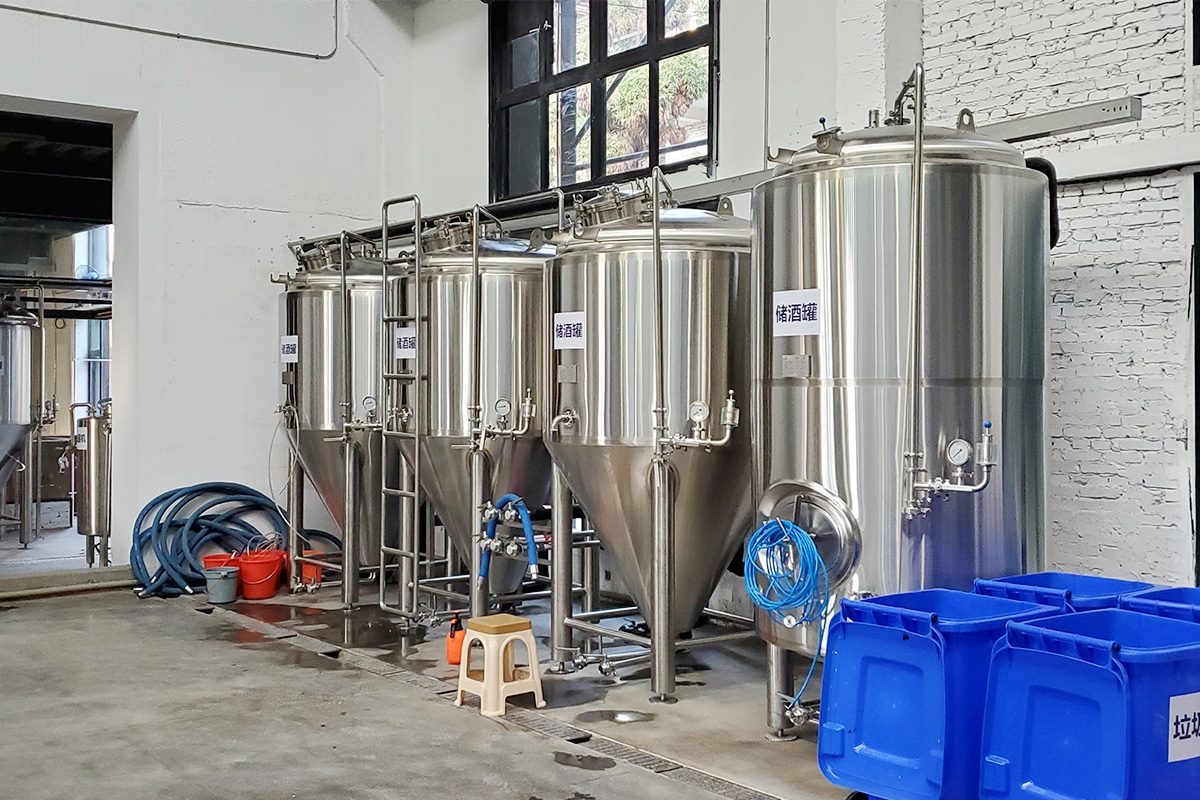
Methods for Temperature Control
Insulation
Insulation is a passive method of temperature control that helps to minimize heat exchange between the fermentation tank and its surrounding environment. Proper insulation can maintain a stable temperature and reduce the load on active cooling and heating systems.
- Materials: Common insulating materials include polyurethane foam, polystyrene, and fiberglass. These materials have low thermal conductivity, which helps to prevent heat loss in colder environments and heat gain in warmer environments.
- Tank Design: Insulation can be integrated into the design of the fermentation tanks. Double-walled tanks with an insulating layer between the walls are effective in maintaining temperature stability.
- Application: Insulation should be applied uniformly around the tank, including the top and bottom, to ensure comprehensive temperature control. Insulated jackets can also be used to retrofit existing tanks.
Benefits of Insulation
- Energy Efficiency: Reduces the need for active heating and cooling, leading to energy savings.
- Consistency: Helps maintain a consistent temperature by minimizing external temperature fluctuations.
- Protection: Protects the fermenting product from rapid temperature changes that can affect quality.
Cooling Systems
The cooling system removes excess heat generated during the fermentation process. These systems ensure that the temperature remains within the optimal range for yeast activity and product quality.
- Glycol Cooling Systems: Glycol is a common cooling medium used in fermentation tanks. Chilled glycol is circulated through jackets or coils that surround the fermentation tank. The glycol absorbs heat from the fermenting liquid and is then re-cooled in a glycol chiller before being recirculated.
- Jacketed Tanks: Tanks with built-in jackets allow glycol to flow around the tank, providing even cooling.
- Immersion Coils: Coils submerged in the fermenting liquid can also be used to circulate glycol, offering direct heat removal.
- Heat Exchangers: Plate or tubular heat exchangers can be used to cool the fermenting liquid. The liquid passes through the heat exchanger where it comes into contact with chilled glycol or another cooling medium, rapidly reducing its temperature.
- Refrigeration Units: Dedicated refrigeration units can be used to cool the air in fermentation rooms or directly cool the tanks. These units are particularly useful in larger facilities where multiple tanks need to be cooled simultaneously.
Benefits of Cooling Systems
- Precision: Allows precise control over the fermentation temperature, ensuring optimal yeast performance.
- Scalability: Suitable for small-scale homebrewing to large commercial operations.
- Flexibility: Can be adapted to various tank designs and fermentation processes.
Heating Systems
Heating systems are used to maintain or raise the temperature in fermentation tanks, particularly in colder climates or during specific fermentation stages that require higher temperatures.
- Warm Water Jackets: Similar to glycol cooling jackets, warm water jackets circulate heated water around the tank. This method provides gentle and even heating to the fermenting liquid.
- Heating Coils: Electric heating coils can be placed inside the fermentation tank or wrapped around it. These coils are controlled to provide the necessary heat to maintain the desired temperature.
- Heat Pads and Belts: For smaller fermentation setups, heat pads or belts can be wrapped around the tank. These are typically electric and provide direct heat to the tank walls, gradually raising the temperature of the liquid inside.
- Temperature-Controlled Rooms: Placing fermentation tanks in temperature-controlled rooms or chambers can help maintain a consistent temperature. These rooms are equipped with HVAC systems that can both heat and cool the space as needed.
Benefits of Heating Systems
- Control: Provides the ability to raise temperatures precisely, crucial for certain fermentation stages.
- Consistency: Helps maintain a stable temperature in environments where ambient temperatures are low.
- Versatility: Can be used in conjunction with cooling systems to provide comprehensive temperature control.
Integration of Cooling and Heating Systems
Combining cooling and heating systems offers the most flexibility and control over fermentation temperatures. Modern fermentation tanks often come equipped with integrated systems that can switch between heating and cooling modes based on real-time temperature data.
- Automated Control: Advanced systems use programmable logic controllers (PLCs) or other automation technologies to monitor temperature continuously and adjust heating or cooling mechanisms accordingly. This ensures precise temperature maintenance without manual intervention.
- Energy Efficiency: By using both heating and cooling systems, energy consumption can be optimized. For instance, excess heat from other parts of the facility can be repurposed for warming fermentation tanks, reducing overall energy usage.
- Data Logging: Continuous monitoring and data logging allow for the analysis of temperature trends, helping to identify and address potential issues before they affect the fermentation process.
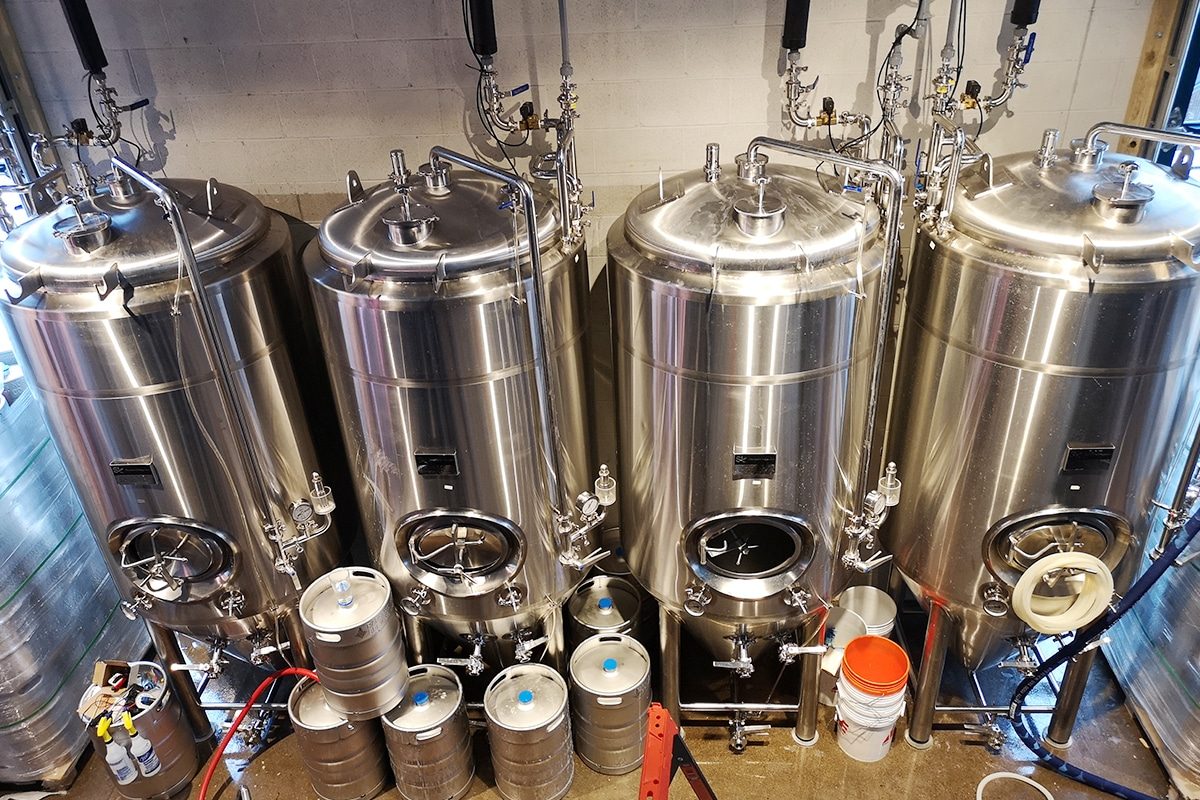
Best Practices for Temperature Control in Fermentation
Regular Calibration and Maintenance
Calibration
Regularly calibrate temperature sensors, thermometers, and thermostats to ensure accurate readings. Calibration should be performed according to the manufacturer’s specifications and industry standards.
- Schedule: Establish a routine calibration schedule, typically every three to six months, depending on usage and environmental conditions.
- Documentation: Keep detailed records of calibration activities, including dates, personnel involved, and results.
Maintenance
Regular maintenance of heating and cooling systems, as well as insulation, is essential to prevent malfunctions.
- Inspection: Conduct routine inspections of all equipment to identify and address wear and tear, leaks, or other issues.
- Cleaning: Ensure that all components, such as coils, jackets, and sensors, are clean and free from contaminants that could affect performance.
- Repairs: Promptly repair or replace faulty equipment to maintain optimal operation.
Process Optimization
Fermentation Scheduling
Plan fermentation schedules to avoid peak periods of ambient temperature fluctuations. For instance, starting fermentations in the evening during hot summer months can help mitigate heat buildup.
- Batch Management: Manage batch sizes to ensure that heating and cooling systems are not overwhelmed.
Yeast Management
Use yeast strains that are well-suited to the intended fermentation temperature range. Proper yeast hydration and pitching rates can also influence temperature stability.
- Pitching Rate: Use appropriate pitching rates to ensure robust fermentation without excessive heat generation.
- Oxygenation: Properly oxygenate wort to support healthy yeast activity, which can lead to more predictable temperature profiles.
Agitation and Mixing
Implement gentle agitation or mixing to promote uniform temperature distribution within the tank.
- Mechanical Agitators: Use mechanical agitators or recirculation pumps to ensure even temperature throughout the fermenting liquid.
Data Logging and Analysis
Continuous Monitoring
Implement systems that provide continuous monitoring of temperature data. Use sensors and data loggers to track temperature at multiple points within the tank.
- Real-Time Alerts: Set up real-time alerts for deviations from the desired temperature range to enable quick corrective actions.
Data Analysis
Analyze temperature data to identify trends, predict potential issues, and optimize fermentation conditions.
- Trend Analysis: Use historical data to understand how different factors affect temperature control and make adjustments as needed.
- Predictive Maintenance: Leverage data analytics to anticipate equipment failures and schedule maintenance proactively.
Redundancy and Backup Systems
Backup Cooling and Heating Units
Install backup cooling and heating units that can take over in case the primary system fails.
- Automatic Switch-Over: Use systems with automatic switch-over capabilities to minimize downtime and maintain temperature control.
Power Backup
Ensure that fermentation tanks and control systems are connected to uninterruptible power supplies (UPS) or backup generators to prevent temperature fluctuations during power outages.
- Testing: Regularly test backup power systems to ensure they function correctly when needed.
Training and Standard Operating Procedures (SOPs)
Training Programs
Develop comprehensive training programs for all personnel involved in the fermentation process.
- Skills Development: Focus on developing skills related to equipment operation, calibration, maintenance, and troubleshooting.
- Safety Protocols: Include safety protocols to ensure safe handling of heating and cooling systems and chemicals.
Standard Operating Procedures (SOPs)
Create detailed SOPs for all aspects of temperature control.
- Documentation: Document procedures for calibration, maintenance, monitoring, and emergency response.
- Accessibility: Ensure that SOPs are easily accessible to all relevant personnel and regularly updated to reflect best practices and technological advancements.
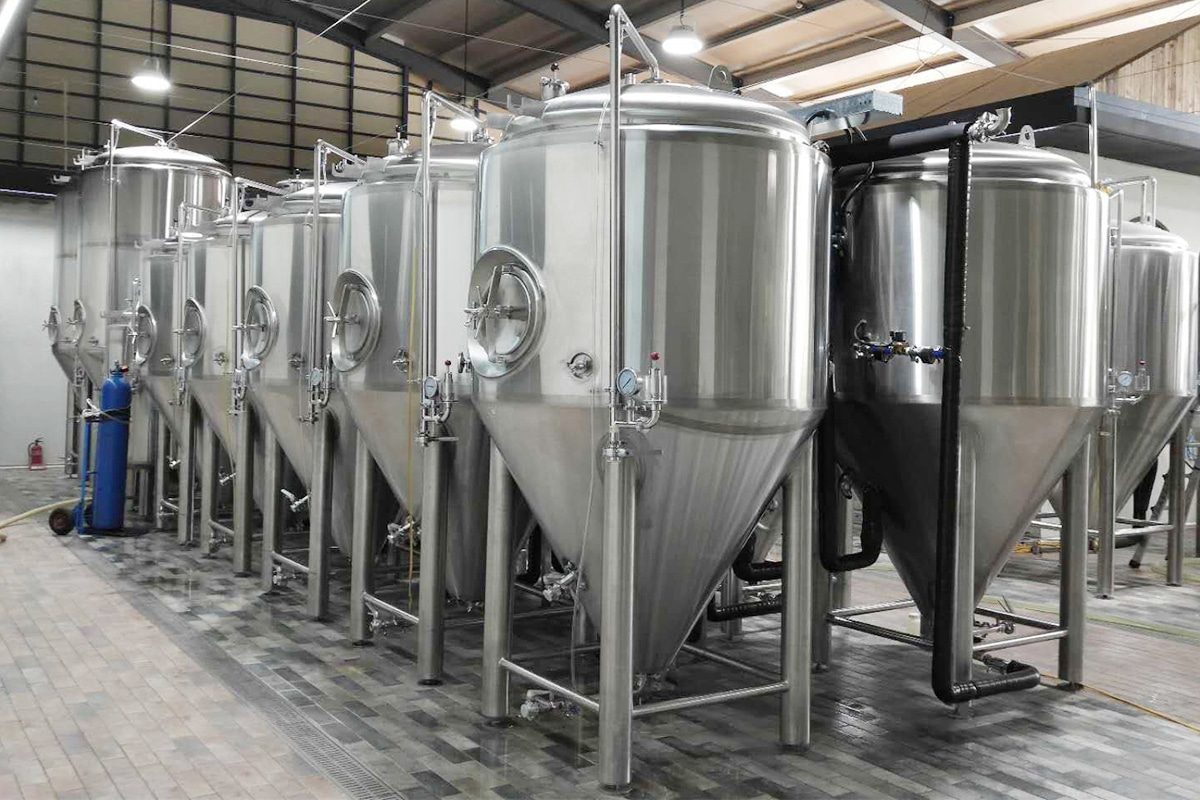
Troubleshooting Common Temperature Control Issues
Uneven Temperature Distribution
Causes
- Inadequate Mixing: Lack of proper agitation or mixing can result in temperature gradients within the tank.
- Improper Tank Design: Tanks without proper internal circulation systems or those with poor insulation can experience uneven temperature distribution.
- Faulty Sensors: Misplaced or malfunctioning temperature sensors may provide inaccurate readings, leading to uneven cooling or heating.
Solutions
- Implement Mixing Systems: Use mechanical agitators, recirculation pumps, or gentle mixing techniques to promote uniform temperature distribution. Ensure that mixing is gentle enough not to disrupt the fermentation process.
- Check Tank Design: Ensure that tanks are designed to facilitate even temperature distribution. This can include using tanks with built-in baffles or circulation systems.
- Optimize Sensor Placement: Place temperature sensors at multiple points within the tank to get a comprehensive view of the temperature profile. Regularly calibrate sensors to ensure accuracy.
- Insulate Tanks Properly: Ensure that tanks are adequately insulated to minimize external temperature influences and promote even internal temperatures.
Temperature Spikes or Drops
Causes
- Equipment Malfunction: Failure of heating or cooling systems can lead to sudden temperature changes.
- Power Outages: Loss of power can cause cooling or heating systems to stop working, leading to temperature fluctuations.
- Environmental Factors: Extreme changes in ambient temperature can impact the internal temperature of the fermentation tank, especially if insulation is inadequate.
Solutions
- Regular Equipment Maintenance: Perform routine maintenance on heating and cooling systems to prevent malfunctions. Replace worn or faulty components promptly.
- Backup Power Systems: Install uninterruptible power supplies (UPS) or backup generators to maintain temperature control during power outages. Test these systems regularly to ensure they are functional.
- Monitor Environmental Conditions: Use environmental controls, such as HVAC systems, to maintain stable ambient temperatures in fermentation areas. Enhance insulation if necessary to reduce the impact of external temperature changes.
- Automate Temperature Controls: Utilize automated control systems that can quickly respond to temperature deviations and adjust heating or cooling mechanisms accordingly.
Inconsistent Fermentation Quality
Causes
- Temperature Fluctuations: Inconsistent temperature control can cause fluctuations that affect yeast performance and fermentation outcomes.
- Improper Temperature Set Points: Incorrectly set temperature ranges for the specific yeast strain or fermentation process can lead to suboptimal results.
- Sensor Inaccuracy: Inaccurate temperature readings from faulty or poorly calibrated sensors can result in improper temperature adjustments.
Solutions
- Maintain Consistent Temperature: Ensure that fermentation tanks are equipped with reliable heating and cooling systems that maintain a stable temperature throughout the fermentation process. Regularly calibrate and test these systems for accuracy.
- Set Correct Temperature Ranges: Understand the optimal temperature ranges for the specific yeast strain and fermentation process being used. Set temperature controls accordingly to maintain these ranges.
- Enhance Monitoring and Control: Use advanced monitoring systems with high-precision sensors to continuously track temperature. Implement automated controls to make real-time adjustments as needed.
- Analyze Data: Regularly analyze fermentation data to identify trends and correlations between temperature control and fermentation quality. Use this data to fine-tune processes and improve consistency.
Additional Tips for Troubleshooting
- Conduct Regular Audits: Periodically audit temperature control systems and processes to identify potential issues before they become problematic. This includes checking equipment, reviewing data logs, and assessing environmental conditions.
- Document Issues and Solutions: Maintain detailed records of any temperature control issues encountered and the solutions implemented. This documentation can help identify patterns and prevent future occurrences.
- Engage in Continuous Improvement: Foster a culture of continuous improvement by encouraging feedback from production staff and regularly reviewing and updating SOPs based on new insights and technological advancements.
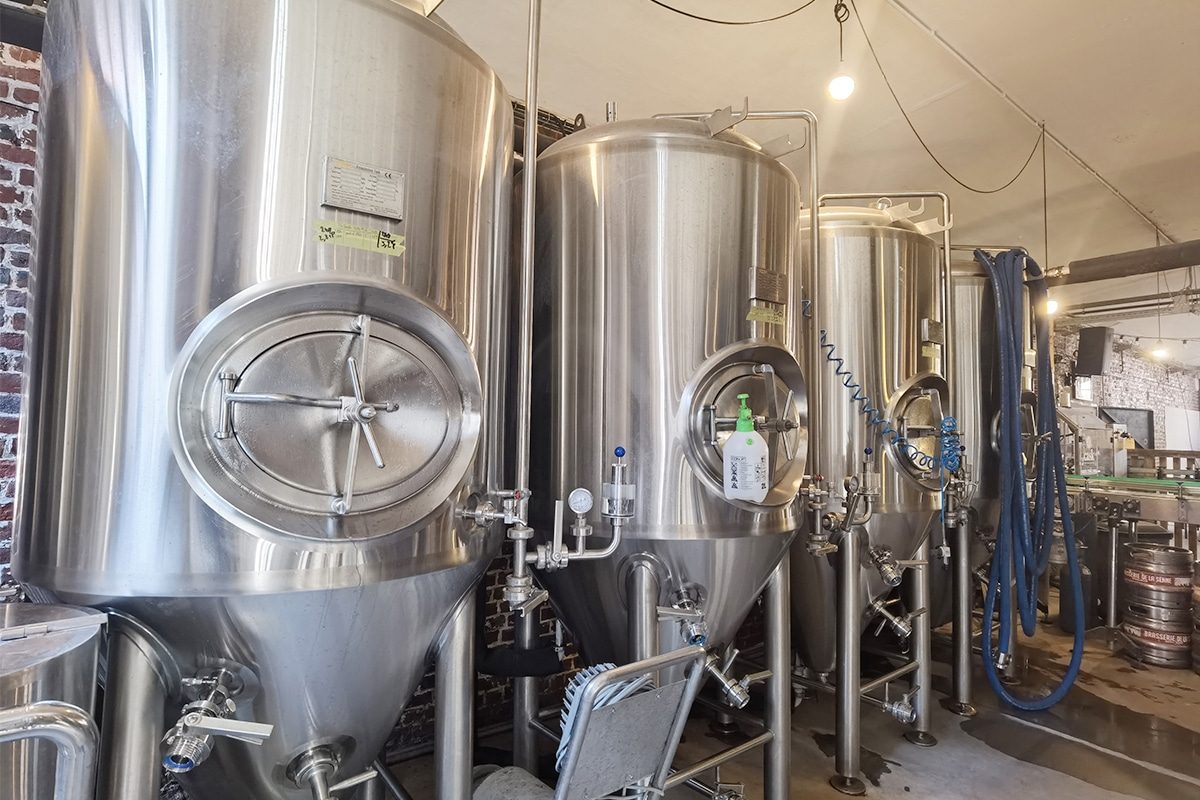
Summarize
